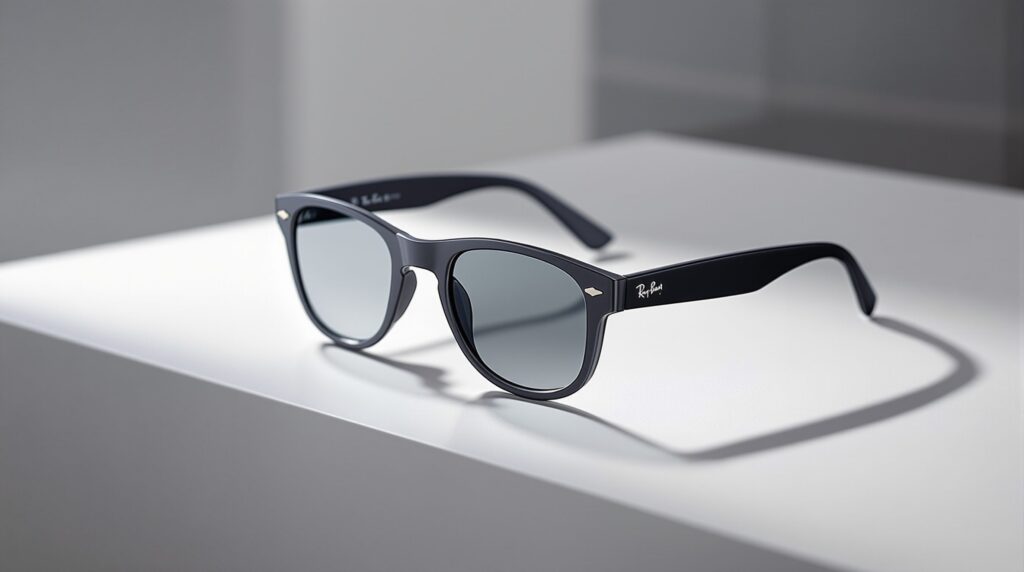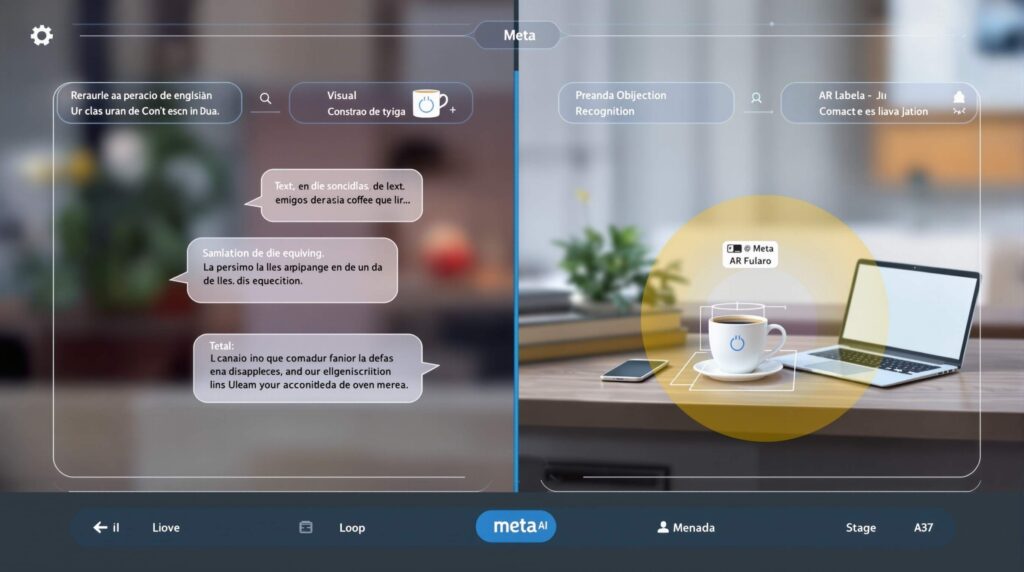By David Chen | Updated: November 13, 2025 | 12 min read

Meta’s collaboration with iconic eyewear brand Ray-Ban has produced a device that seamlessly blends fashion with functionality. The Ray-Ban Meta glasses look remarkably similar to traditional Ray-Ban Wayfarers. But beneath this familiar exterior lies sophisticated technology: a 12-megapixel camera, five-microphone array, Meta AI integration, and an impressive 8-hour battery life.
What Makes Ray-Ban Meta Smart Glasses Special?
The second-generation Ray-Ban Meta glasses weigh just 48 grams—only 5 grams heavier than standard Ray-Ban frames. These smart glasses are priced starting at $299 for the original model and $379 for the Gen 2 version, positioning them in the mid-range segment of the price of smart glasses market.
Camera and Video Capabilities: The Star Feature

The Gen 2 model features a 12-megapixel ultra-wide camera—a significant upgrade from the original’s 5-megapixel sensor. Video recording supports up to 3K resolution (2880 x 2880 pixels) with a maximum clip length of 3 minutes. The hands-free capture workflow is genuinely transformative. Simply saying “Hey Meta, take a photo” captures the moment without fumbling for your phone.
Meta AI Integration

Meta AI transforms these glasses from simple recording devices into intelligent assistants. Real-time translation is perhaps the most practically useful capability. Visual object recognition allows the AI to identify and provide information about things you’re looking at. The five-microphone array performs impressive noise cancellation.
Battery Life: Significant Gen 2 Improvement
The upgraded 154 mAh battery (42% larger than Gen 1) delivers approximately 8 hours of mixed-use battery life—double the original’s 4-hour endurance. The included charging case provides an additional 32 hours of battery life through multiple recharge cycles.
Market Performance and Competition

According to Counterpoint Research, Meta captured 73% of the smart glasses market in H1 2025, with shipments growing 110% year-over-year. Industry analysts project Meta will ship approximately 3 million units in 2025 and potentially 10 million in 2026.
Strengths and Weaknesses
What Ray-Ban Meta Does Exceptionally Well
- Design and wearability: 48 grams, light enough for all-day wear
- Camera quality: 12MP camera with hands-free voice activation
- Battery life (Gen 2): 8 hours + 32 hours from charging case
- Meta AI capabilities: Real-time translation and object recognition
Where Ray-Ban Meta Falls Short
- Privacy concerns: Camera-equipped glasses raise legitimate questions
- Audio quality limitations: Open-ear design can’t match dedicated devices
- Dependence on smartphone: Nearly all advanced features require connection
- No display: For users who want visual feedback or AR overlays
Should You Buy Ray-Ban Meta Smart Glasses?
You should buy Ray-Ban Meta if: You want a stylish way to capture moments hands-free, value the Ray-Ban aesthetic, are invested in Meta’s ecosystem, or need real-time translation features.
Consider alternatives if: You need a display for AR applications, audio quality is your primary concern, privacy concerns make you uncomfortable, or you’re seeking cheap smart glasses.
Ready to Explore Smart Glasses?
Compare Ray-Ban Meta with other leading smart glasses models. Our comprehensive buying guide helps you find the perfect eyewear.
Frequently Asked Questions
Q: Can I get Ray-Ban Meta smart glasses with prescription lenses?
A: Yes, Meta partners with opticians to offer prescription lenses. Prescription lenses typically add $80-150 to the total cost.
Q: What’s the difference between Ray-Ban Meta Gen 1 and Gen 2?
A: Gen 2 improvements include: Camera upgrade from 5MP to 12MP, battery increased by 42% (4h to 8h), enhanced Meta AI, and improved low-light performance. Gen 2 costs $379 vs $299 for Gen 1.
Q: Can Ray-Ban Meta glasses work offline without a phone connection?
A: Basic functions work offline: photo/video capture (stored locally), music playback, and calls. However, Meta AI features require an active phone connection.
Q: Are Ray-Ban Meta smart glasses compatible with both iPhone and Android?
A: Yes, Ray-Ban Meta glasses work with both iOS and Android through the Meta View app. For iOS: iPhone 11+ with iOS 14.4+. For Android: Android 10.0+ with Bluetooth 5.0+.
Conclusion: The Smart Glasses to Beat
Ray-Ban Meta smart glasses have earned their dominant market position through smart design choices, strategic brand partnership, and genuine technological innovation. The 73% market share and 110% growth reflect a product that has found genuine product-market fit.
For anyone considering entry into smart eyewear, Ray-Ban Meta represents the current gold standard for displayless smart glasses. Check our comprehensive smart glasses comparison to see how Ray-Ban Meta fits into the broader landscape.
About the Author
David Chen
David Chen is a Senior Technology Analyst specializing in wearable technology and smart eyewear. Over 8 years testing and reviewing emerging tech products. Passionate about how AI and miniaturization are reshaping personal computing.